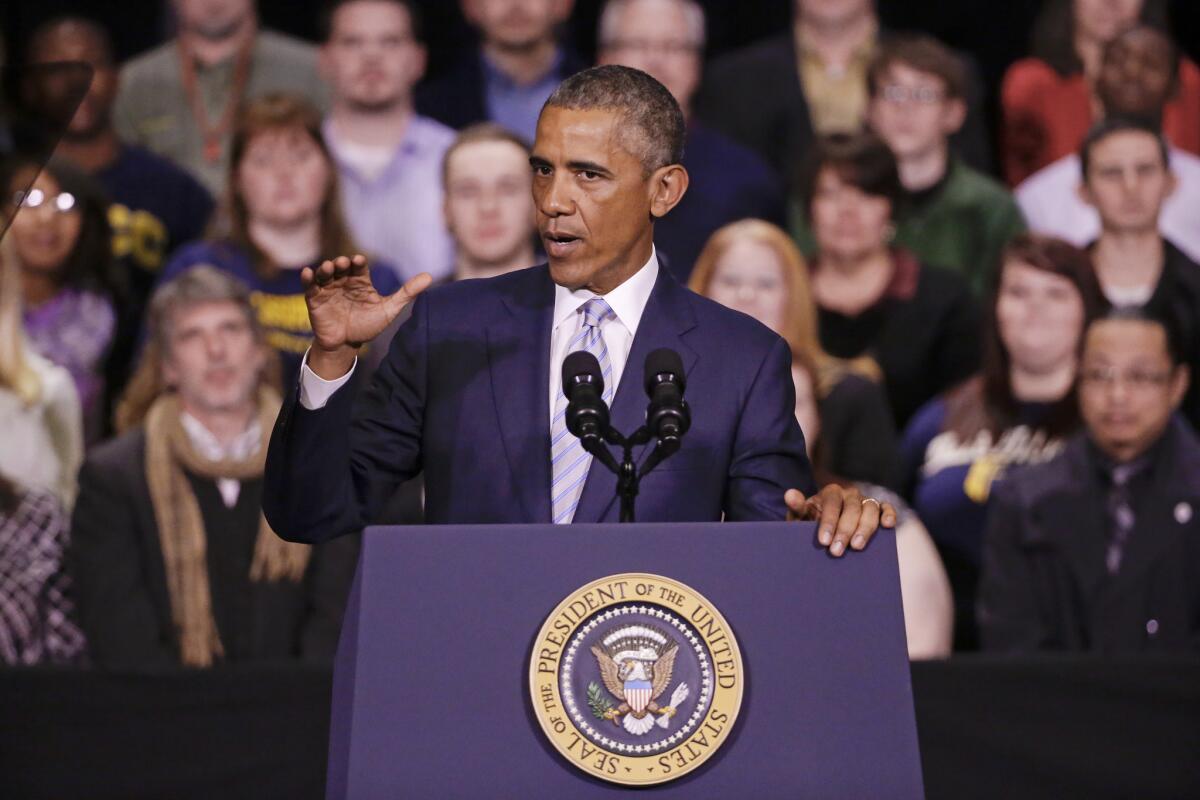Editorial: Is Obama’s plan to pay community college fees for all the best use of the money?

- Share via
If the U.S. government had unlimited funds, it could provide free tuition for community college and no one would complain. For that matter, the nation could put all interested and qualified students through four years of college and beyond. But right here, right now, there are limits to the good the U.S. can accomplish with available public dollars — and that means careful, difficult choices have to be made. If the government has money to spend, should it provide safe, affordable day care for children while their parents go to work? Should it provide preschool for all? How about better reimbursement of doctors who accept Medicaid patients, or a boost in spending on roads, bridges, airports and other infrastructure?
President Obama thinks the nation’s next step should be to underwrite up to three years of free community college for everyone who attends half or full time, progressing toward a vocational certificate or transfer to a four-year school. In a way, this makes sense: Community colleges are a particularly efficient way of delivering the first years of higher education, at a lower overall cost not just for students but for the nation as a whole.
Under Obama’s ambitious proposal, the federal government would pick up 75% of the cost, paying up to about $2,500 a year per student, with states paying the rest. The president estimates that the program would cost $60 billion over 10 years, although with close to 9 million students expected to be eligible, it’s unclear how the cost could be kept that low.
It’s a nice idea in theory. But at a time of limited resources, Obama is proposing to underwrite the community college educations not just of low-income students but also of those who can easily afford the tuition. Is that necessary or wise? California already waives all fees for any student whose family earns less than $80,000 a year — a category that includes close to half of the state’s community college students. The annual fees of about $1,500 are not an obstacle for the rest. Many other states offer similar relief for low-income students, and federal Pell grants can also help cover their costs.
It makes little sense to subsidize students who don’t need the money while low-income students, even with basic tuition costs covered, still face tremendous barriers to attending community college. Their living expenses are a far bigger cost than tuition, especially in California.
The jobs of the future will depend on higher education; the nation shouldn’t blithely accept the notion that a free public education stops after a high school diploma. The president is thinking big, but a leaner, means-tested program, targeted to the students who need it most, would be the smarter policy.
Follow the Opinion section on Twitter @latimesopinion
More to Read
Sign up for Essential California
The most important California stories and recommendations in your inbox every morning.
You may occasionally receive promotional content from the Los Angeles Times.













